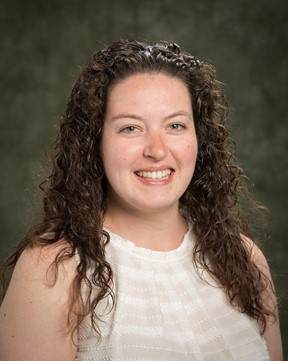Player FMアプリでオフラインにしPlayer FMう!
Tracy Hookway, Binghamton University – Cell Research Could Help Us Better Understand How Our Hearts Beat
Manage episode 423492848 series 2459839
 When it comes to the heart, we have much research left to do.
When it comes to the heart, we have much research left to do.
Tracy Hookway, assistant professor in the biomedical engineering department at Binghamton University, outlines some remaining questions.
The focus of our lab is to develop predictive engineered in vitro models of human cardiovascular tissues to interrogate the mechanisms that drive morphogenic developmental processes. To achieve this we use multi-scale, three-dimensional cultures of stem cells and their differentiated progeny to recapitulate tissue development, tissue homeostasis, and pathophysiological states. We focus on understanding the bi-directional interactions between cells and their local environment.
Other areas of interest in the lab include age-specific changes in tissue state, cell-extracellular matrix interactions, bioprocessing and tissue fabrication.
Cell Research Could Help Us Better Understand How Our Hearts Beat
https://academicminute.org/wp-content/uploads/2024/06/06-14-24-Binghamton-Cell-research-could-help-us-better-understand-how-our-hearts-beat.mp3Your Fitbit or smartwatch can measure the variability in your heart rate, but very little is known about how the neurons that speed up and slow down your heartbeat interact. Electrical signals from the nervous system stimulate a particular location in the heart, but neurons throughout the heart help fine-tune your heart rate.
Thanks to a five-year, 500,000-dollar National Science Foundation CAREER Award, I can now advance research about these nerve cell populations that play a critical role in maintaining our heartbeat.
To study these systems, I will create 2D and 3D models of human cardiac cells. Additionally, I will develop game-based educational models for high school and undergraduate students to introduce concepts such as tissue engineering, cardiovascular physiology, biomanufacturing, and stem-cell biology. Through this project, I aim to cultivate a greater interest in science, especially in rural communities lacking access to programs like those available on Binghamton University’s campus.
So why is there so little research in this field regarding one of the most essential organs in the body? Part of the issue is that the cardiac cells I work with are challenging to obtain. These specific cells don’t divide and cannot be expanded in culture. The use of stem cell-derived populations has gained traction only in the last five to ten years, and the process is complex and expensive.
Understanding more about the push-and-pull of the sympathetic and parasympathetic nervous systems will lead to increasingly accurate models of heart cells. This knowledge holds significance for heart transplants, neurodegenerative diseases, stem-cell therapies and pharmaceutical research.
The post Tracy Hookway, Binghamton University – Cell Research Could Help Us Better Understand How Our Hearts Beat appeared first on The Academic Minute.
283 つのエピソード
Manage episode 423492848 series 2459839
 When it comes to the heart, we have much research left to do.
When it comes to the heart, we have much research left to do.
Tracy Hookway, assistant professor in the biomedical engineering department at Binghamton University, outlines some remaining questions.
The focus of our lab is to develop predictive engineered in vitro models of human cardiovascular tissues to interrogate the mechanisms that drive morphogenic developmental processes. To achieve this we use multi-scale, three-dimensional cultures of stem cells and their differentiated progeny to recapitulate tissue development, tissue homeostasis, and pathophysiological states. We focus on understanding the bi-directional interactions between cells and their local environment.
Other areas of interest in the lab include age-specific changes in tissue state, cell-extracellular matrix interactions, bioprocessing and tissue fabrication.
Cell Research Could Help Us Better Understand How Our Hearts Beat
https://academicminute.org/wp-content/uploads/2024/06/06-14-24-Binghamton-Cell-research-could-help-us-better-understand-how-our-hearts-beat.mp3Your Fitbit or smartwatch can measure the variability in your heart rate, but very little is known about how the neurons that speed up and slow down your heartbeat interact. Electrical signals from the nervous system stimulate a particular location in the heart, but neurons throughout the heart help fine-tune your heart rate.
Thanks to a five-year, 500,000-dollar National Science Foundation CAREER Award, I can now advance research about these nerve cell populations that play a critical role in maintaining our heartbeat.
To study these systems, I will create 2D and 3D models of human cardiac cells. Additionally, I will develop game-based educational models for high school and undergraduate students to introduce concepts such as tissue engineering, cardiovascular physiology, biomanufacturing, and stem-cell biology. Through this project, I aim to cultivate a greater interest in science, especially in rural communities lacking access to programs like those available on Binghamton University’s campus.
So why is there so little research in this field regarding one of the most essential organs in the body? Part of the issue is that the cardiac cells I work with are challenging to obtain. These specific cells don’t divide and cannot be expanded in culture. The use of stem cell-derived populations has gained traction only in the last five to ten years, and the process is complex and expensive.
Understanding more about the push-and-pull of the sympathetic and parasympathetic nervous systems will lead to increasingly accurate models of heart cells. This knowledge holds significance for heart transplants, neurodegenerative diseases, stem-cell therapies and pharmaceutical research.
The post Tracy Hookway, Binghamton University – Cell Research Could Help Us Better Understand How Our Hearts Beat appeared first on The Academic Minute.
283 つのエピソード
すべてのエピソード
×プレーヤーFMへようこそ!
Player FMは今からすぐに楽しめるために高品質のポッドキャストをウェブでスキャンしています。 これは最高のポッドキャストアプリで、Android、iPhone、そしてWebで動作します。 全ての端末で購読を同期するためにサインアップしてください。




